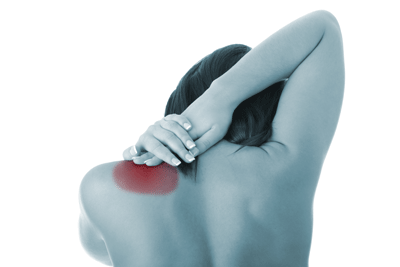
New research demonstrates the effectiveness of laser therapy for shoulder impingement syndrome.
Researchers compared the effects of low laser therapy to ultrasound therapy for treating subacromial impingement syndrome, sometimes called shoulder impingement syndrome, swimmer's shoulder or thrower's shoulder. They discovered that low laser therapy was as effective as ultrasound in alleviating symptoms of shoulder impingement syndrome. Patients experienced significant reductions in shoulder pain, disability, and sleep disturbances.
"Based on our findings, we conclude that therapy may be considered as an effective alternative to ultrasound based therapy in patients with subacromial impingement syndrome especially ultrasound based therapy is contraindicated," the researchers concluded.
Low level laser therapy is a technique commonly used by chiropractors to target musculoskeletal pain like whiplash and back pain. Low levels of infrared and red light are delivered directly to an injured area of the body. This is believed to stimulate the mitochondria to produce more ATP, alter cellular function, and initiate the body's natural anti-inflammatory and analgesic responses.
In the study published in Journal of Back Musculoskeletal Rehabilitation, 16 patients received low-level laser therapy, and 15 received ultrasound therapy over a period of two weeks (five times per week). Patients were evaluated one month and three months after treatment. At both intervals patients experienced statistically significant reductions in pain, disability, and sleep interference scores, and there were no significant differences between the groups.
Shoulder Impingement Syndrome
Shoulder impingement syndrome is one of the most common causes of shoulder pain, affecting 44-65% of patients presenting with shoulder pain at primary care clinics. The condition develops when the rotator cuff muscles are pinched, irritated, or inflamed. The rotator cuff muscles run through a narrow space beneath the acromion and above the humerus, call the subacromial space.
Repetitive activities like throwing a ball or swimming, or a sudden strain on the shoulder, can cause inflammation of the bursa or tendons passing through the subacromial space. Osteoarthritis in the shoulder may also lead to development of boney overgrowths. Any of these factors can lead to a narrowing of subacromial space, impinging the msucles, bursa, and tendons. Patients may experience muscle weakness, loss of movement in the shoulder, and pain.
References
Umer, et al. Subacromial impingement syndrome. Orthopedic Reviews (2012). 4(2): e18. http://www.ncbi.nlm.nih.gov/pmc/articles/PMC3395987/
Yavus F, et al. Low-level laser therapy versus ultrasound therapy in the treatment of subacromial impingement syndrome: A randomized clinical trial.